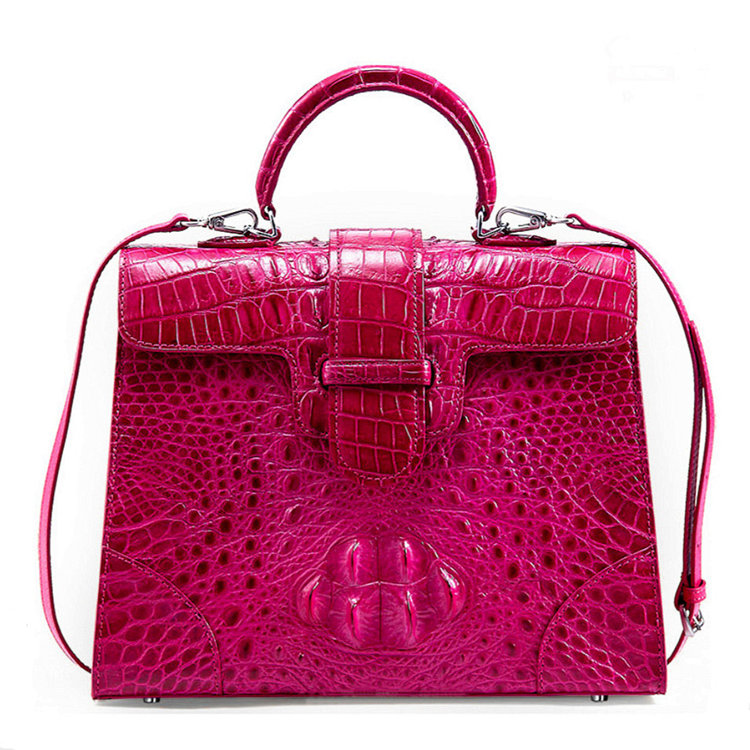Introduction: This study aims to delve into the recent surge in popularity of crocodile skin bags. With an increasing number of luxury brands incorporating crocodile leather into their product lines, it is essential to understand the underlying factors that drive this trend. This report will explore the reasons behind this phenomenon, examine the ethical concerns associated with using exotic animal skins, delve into the consumer perspective, and provide insights into the future of croc bags in the fashion industry.
Reasons for Rising Popularity:
1. Status Symbol and Exclusivity: Croc bags have become a coveted status symbol in the fashion industry, representing luxury and opulence. The rarity and exclusivity of crocodile leather contribute to its high value and desirability. Consumers seeking a distinctive accessory are attracted to the unique patterns and textures found in crocodile skin, setting them apart from more common leather bags.
2. Durability and Longevity: Croc leather is renowned for its durability and unmatched longevity. These bags require minimal maintenance compared to other materials, making them ideal for consumers seeking investment pieces. The inherent toughness of crocodile leather ensures that bags maintain their pristine appearance even after years of use, further enhancing their appeal.
3. Fashionability and Versatility: Designers have incorporated crocodile leather into various bag styles, ranging from minimalist to intricate, making them suitable for diverse fashion preferences. Croc bags can effortlessly elevate any outfit, adding a touch of sophistication and elegance. The versatility of these bags, their ability to seamlessly transition from day to night, makes them highly sought after by fashion enthusiasts.
Ethical Concerns:
1. Cruelty and Sustainability: The use of exotic animal skins, including crocodile leather, raises ethical concerns related to animal welfare. Captive breeding and farming methods vary across regions, with some establishments practicing sustainable and humane breeding practices. However, the challenge lies in distinguishing between ethically and unethically sourced crocodile leather, as regulations and standards differ significantly. Adequate transparency and ethical sourcing measures are essential to mitigate these concerns.
2. Environmental Impact: Crocodile farming for the production of leather contributes to the environmental footprint of the fashion industry. The maintenance of a suitable habitat for these reptiles, feeding practices, and waste management all impact land and water resources. Sustainable farming practices and responsible waste disposal methods can help mitigate the environmental impact associated with crocodile leather production.
Consumer Perspectives:
1. Brand Reputation and Craftsmanship: Consumers consider the reputation and heritage of luxury brands before purchasing a croc bag . The craftsmanship, attention to detail, and quality associated with renowned fashion houses play a crucial role in consumer decision-making. Consumers often view crocodile bags as investments in artisanal luxury, resulting in a certain level of brand loyalty.

2. Personal Style and Fashion Trends: Individual style and following fashion trends heavily influence consumer preferences. The versatility of croc bags allows for easy incorporation into both classic and trendy ensembles. The desire for uniqueness and fashion-forwardness drives consumers to crocodile leather bags as a fashionable accessory.

Future Outlook:
The rising popularity of crocodile skin bags is expected to continue, albeit with greater emphasis on sustainable practices. Industry stakeholders are increasingly recognizing the need for transparency and ethical sourcing to address consumer concerns. Luxury brands are exploring alternative materials and innovative techniques to achieve a faux croc look, reducing reliance on genuine crocodile leather. By striking a balance between sustainability, craftsmanship, and consumer demand, the future of croc bags in the fashion industry remains promising.
Conclusion: This study provides an in-depth analysis of the current popularity of crocodile skin bags, addressing various aspects ranging from the reasons behind their rising popularity to the associated ethical concerns. By understanding consumer perspectives and envisioning future trends, industry players can adapt to ensure the sustainable growth of croc bags while meeting consumer demands ethically. This research serves as a valuable resource for fashion enthusiasts, industry professionals, and consumers alike seeking a comprehensive understanding of this trend.
